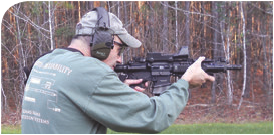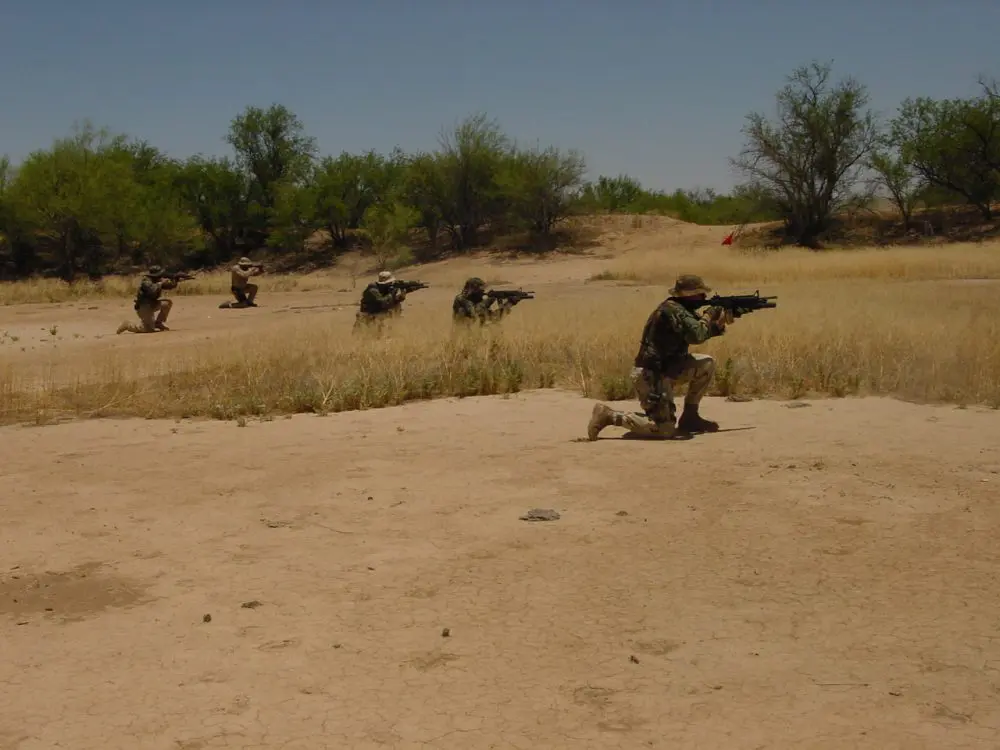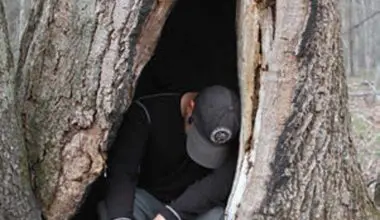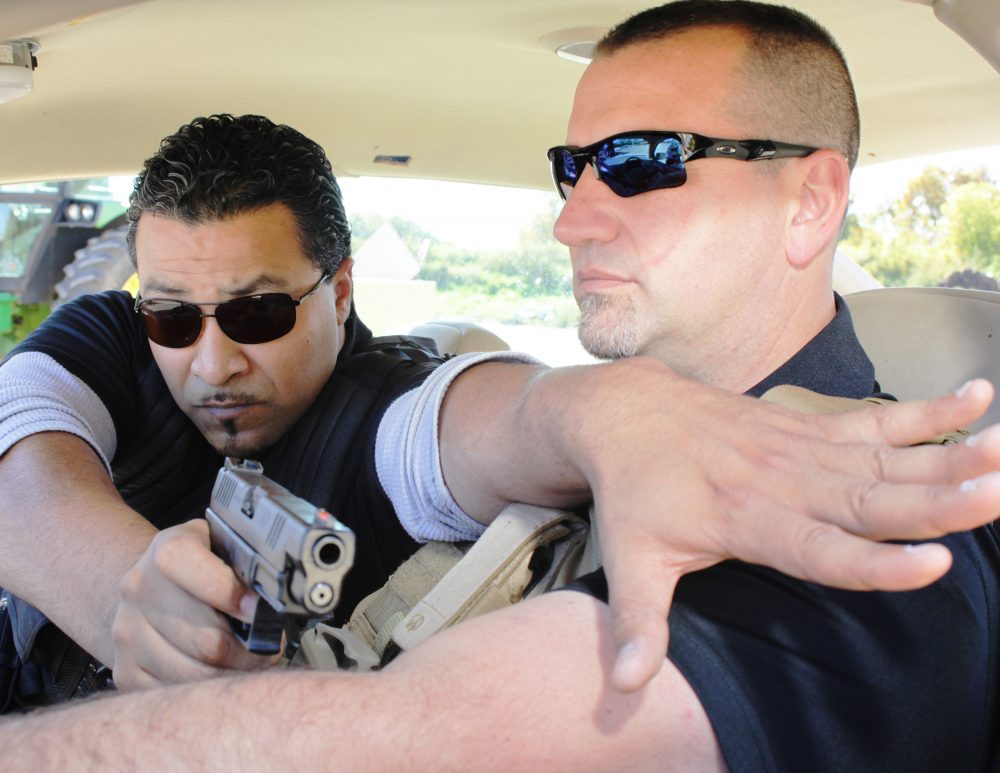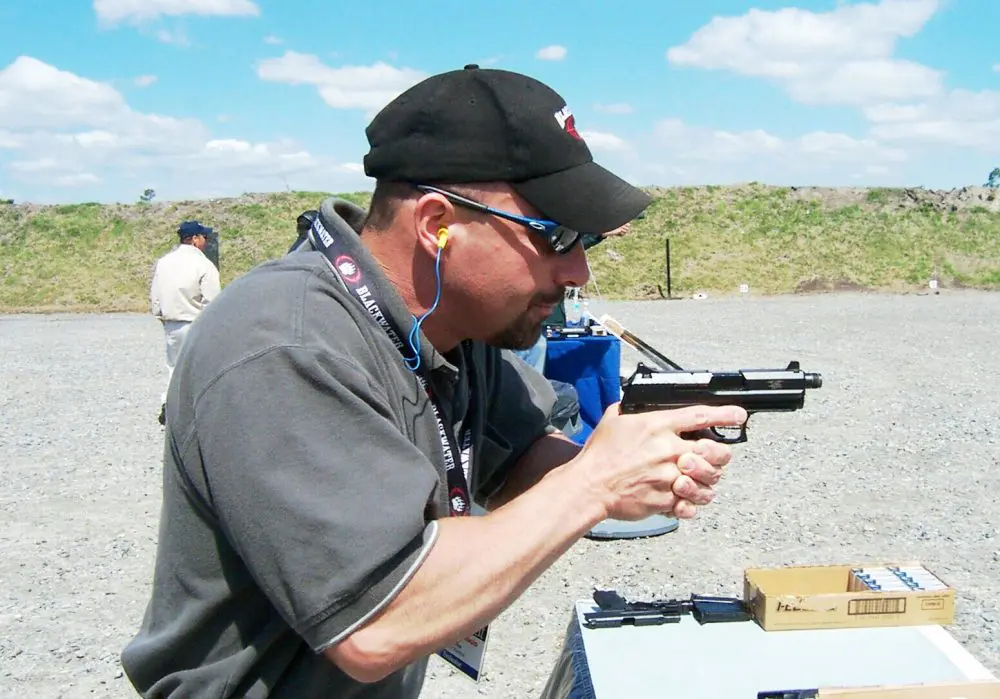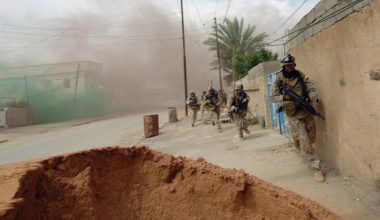In my years of firearms training, I have frequently encountered failure, Mozambique, or standard response (two to the body, one to the head) drills in the private training sector and as part of some police courses of fire, but no head-shot-first phases. Perhaps that has something to do with employing firearms to stop rather than kill.
In our current era of active shooters and terrorists who often augment their small-arms firepower with suicide belts and vests, it is imperative to shut them down immediately to prevent further bullet or bomb carnage.
As a result of their modus operandi, “experts” have been recommending engaging these threats with head shots immediately, rather than scoring center-mass hits first to quickly interrupt the Central Nervous System. Body shots may break the subject down, but as long as there is oxygen available to the brain and the hands are still working, he could continue firing for 20 to 30 seconds or detonate his murder bomb.
Furthermore, suicide vests involving chest-carried explosives may be sympathetically detonated if torso shots are delivered.
Table of Contents
IMMEDIATE INCAPACITATION
If the head is the ten ring, the medulla oblongata is the X ring. It is located low and at the brain’s rear on the brain stem. It controls many functions, including the heart and hands. Snipers attempt to access it via an imaginary two-inch circumferential band superimposed frontally over the eye socket area. However, almost any penetration of the brain-mass area will turn out the lights in the majority of human beings.

HEAD-SHOT TRIAD
If you must confront one or more of these monsters, while hopefully enjoying the element of surprise, you need to
- Possess the necessary skills to consistently make both short- and long-range shots and know where to place your shot.
- Your firearm must be inherently accurate enough to accomplish this.
- Your load and bullet must be accurate enough and capable of penetrating the skull from all angles out to at least 25 yards—perhaps 50 if explosives are involved.
This is the Head-Shot Triad that must be satisfied well before any confrontation occurs. Low-capacity personal-defense pocket guns may not cut it, but may be all you have at the moment you are caught up in such a scenario. Determine beforehand what your standoff head-shot limitations are with your concealed-carry piece and ammunition and work on extending it. Practice head shots at all distances from braced and unbraced positions, preferably from a prone stance or behind cover to avoid a potential blast wave and shrapnel.
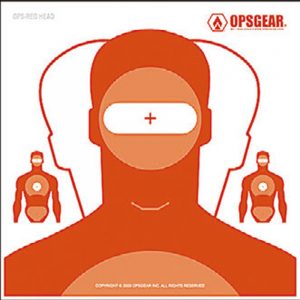
Shots commencing at 75 and 150 feet may be necessary to avoid a bomb’s blast radius. For a ten-pound belt of shrapnel-laced explosives, an indoor evacuation distance of 90 feet is recommended and 1,080 feet for outdoor situations. The shorter indoor standoff may be derived from blast-absorbing structures, cross-compartments, and obstacles normally found in building interiors.
If confronting a terrorist wearing a vest that could weigh 20 pounds or more inside a building, an evacuation space of 110 feet is recommended and in open terrain, 1,360 feet.
Obviously, open-air expanses are appropriate for rifles to resolve, but indoor scenarios could be solved by an accomplished shooter with a good handgun, perhaps augmented by a red-dot optic and quality ammunition. At Col. Jeff Cooper’s Gunsite, it was not uncommon for students to drop partially obscured steel Pepper Poppers at 100+ yards with one shot in the Donga events with concealed-carry pistols and using Academy reloaded ammunition.
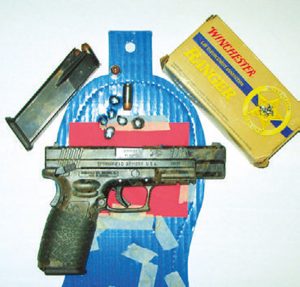
MORAL OBLIGATION
If you are a law enforcement officer, armed oath taker, or carry concealed under HR 218, the Law Enforcement Officers Safety Act (LEOSA), you are expected to move toward the sound of gunfire. Without compromise, get as close as you can or is prudent and, considering the situational variables, take your shot.
If the head-shot is beyond your capabilities, take what you can get of the bad guy’s anatomy. That might be enough to stop the threat or have him prematurely detonate his device. Subjects hugging the floor are vulnerable to the bouncing bullet phenomenon. Aim a couple of feet in front of the subject, and the bullets will carom into the threat.
Yes, you are taking a huge risk and may not survive the confrontation. For police officers and the military, the choice has been made for them.
For LEOSA members, you are not supposed to carry solely for personal protection. While enjoying only limited citizen-arrest powers, you have volunteered to lawfully intercede to stop a criminal action.
Maybe it’s time to reconsider your LEOSA motivation and your small limited-capacity firearm and instead opt for a full-sized service pistol and dress to conceal it.
Thank you for your sacrifice.

